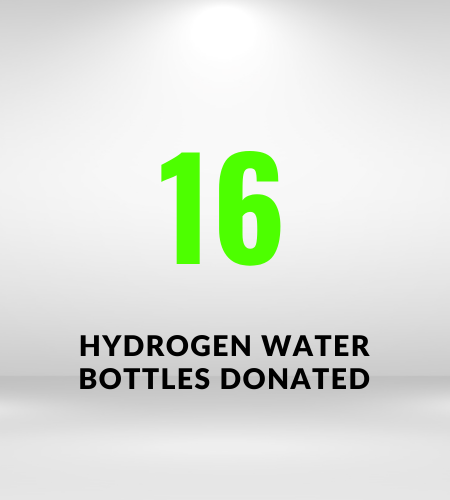The Ultimate Guide to Saunas: Everything You Need to Know
A classic wellness tool, saunas provide everything from better circulation and skin health to relaxation and cleansing. This blog will provide the information you need to get the most out of your sauna, whether you currently own one or are considering purchasing one. To make sure you get the most out of your sauna experience, this guide will take you through the various kinds of saunas, heating options, usage advice, and maintenance procedures.
Types of Saunas
Selecting the appropriate sauna type is essential to getting the experience you want. Below is a summary of the most common kinds:
1. Traditional Finnish Saunas
How They Operate: Finnish saunas generate dry heat by heating stones using an electric or wood-burning furnace. To change the humidity, you may pour water on the stones to produce steam bursts.
Material: Usually composed of high-quality wood that holds heat and doesn't deform, like hemlock or cedar.
Experience: Low to moderate humidity and high temperatures.
Pros:
· Provides a traditional sauna experience.
· Long-lasting and resilient.
Cons:
· It takes longer than other saunas to warm up.
· Increased use of energy.
Ideal For: Fans of saunas who want the classic, powerful heat sensation [1].
2. Infrared Saunas
How They Work: Instead of heating the air around you, infrared saunas utilise infrared heaters to warm your body directly from the inside out.
Material: Usually constructed of wood but with cutting-edge heating element technology.
Experience: Deeper penetration of milder heat into the body.
Pros:
· Quick to heat and energy efficient.
· Perfect for therapeutic purposes (e.g., stress, arthritis, or muscular discomfort).
Cons:
· Doesn't have the steamy, humid ambience of conventional saunas.
Ideal For: Individuals seeking a mild sauna session with healing advantages [2].
3. Steam Saunas (Steam Rooms)
How They Operate: These saunas use steam from a steam generator to create a moist atmosphere.
Material: Tile or glass is frequently used in construction to tolerate excessive humidity.
Experience: A characteristic moist heat is produced by lower temperatures combined with excessive humidity.
Pros:
· Great for skin health and hydration.
· It can aid with respiratory problems.
Cons:
· Constant exposure to dampness necessitates more thorough maintenance.
Ideal For: People who want a soothing, spa-like experience.
4. Portable Saunas
How They Operate: These are lightweight, portable devices that are simple to assemble in confined areas. Infrared technology is used by most.
Material: Fabrics or lightweight synthetic materials.
Experience: Simple sauna advantages in a more compact configuration.
Pros:
· Cost-effective and practical.
· Perfect for short-term use or tiny dwellings.
Cons:
· Less immersive experience and has a restricted heat range.
Ideal For: Users on a tight budget or those with little room [3,4].
Choosing the Right Heater
Selecting the ideal heater is essential as it directly affects the functionality, effectiveness, and general enjoyment of your sauna. The heater determines the type of heat (dry, humid, or radiant), the amount of maintenance needed, and the speed at which your sauna heats up. For instance, wood-burning heaters offer a more traditional, rustic feel but require more maintenance than electric heaters, which are handy and simple. Although they don't have the same extreme heat as traditional saunas, infrared heaters are energy-efficient and perfect for therapeutic purposes. Making the correct heater choice guarantees that your sauna will fit your tastes, use patterns, and installation needs.
1. Electric Heaters
· Because they are simple to use and consistently produce heat, they are ideal for residential usage.
· For accurate temperature adjustments, it can be combined with digital controls.
· Ideal For: Convenience-loving consumers and indoor saunas.
2. Burning Wood Heaters
· Use rustic elements and crackling wood to create a realistic sauna atmosphere.
· It needs routine maintenance, such as cleaning ash and loading wood.
· Ideal For: Traditionalists who like the traditional sauna ritual and outdoor saunas.
3. Infrared Heaters
· Utilise cutting-edge infrared technology to provide heat that penetrates deeply.
· They are environmentally beneficial since they use less energy than conventional heaters.
· Ideal For: Users that value specific therapeutic effects and are health-conscious.
4. Gas Heaters
· Effective for big saunas, but because it costs more, it is less frequently used in household setups.
· Ideal For: Public or commercial saunas that need to run continuously [5].
Tips for Using Your Sauna
Here are some tips for getting the most out of your sauna sessions, regardless of your level of experience:
Preheating
· Preheating a typical sauna takes 20 to 40 minutes, depending on the heater and your desired temperature.
· Since infrared saunas heat up more quickly, preheat them for 10 to 15 minutes.
· Tip: To stop heat from escaping, close doors securely.
Ideal Session Length
· Beginners: To give your body time to get used to the heat, start with 10 to 15 minutes.
· Expert Users: Increase the duration of each session gradually to 20 to 30 minutes.
· Maximum Duration: Don't go beyond 45 minutes to avoid dehydration or overheating.
Temperature Guidelines
· Conventional saunas: 158–212°F (60–100°C).
· Infrared saunas: 122–158°F (50–60°C).
· Steam saunas: 104–122°F (40–50°C) [6].
Frequency of Sauna Sessions
· For most people, two to three times a week is good.
· For experienced users, daily usage is OK, but remember to drink enough water.
Hydration
· Water should always be consumed both before and after your session.
· If you're perspiring a lot, think about drinking electrolyte-enhanced beverages.
· Steer clear of coffee and alcohol since they might worsen dehydration [7].
Dressing for a Sauna Session
· For the most genuine experience, get naked (use towels for hygiene).
· Wear a swimsuit or loose-fitting cotton clothing if you'd like.
Post-Sauna Routine
· Cool down gradually by taking a lukewarm or cool shower.
· Rest for 10–15 minutes to allow your body to adjust [8].
Sauna Maintenance Tips
Maintaining your sauna properly guarantees that it remains sanitary and operational for many years to come:
Cleaning Your Sauna
Regular cleaning:
· Use a moist towel to wipe off walls and benches after each use to remove perspiration and grime.
· Keep the door open to allow for air and stop the formation of mould.
Weekly cleaning:
· Use a gentle detergent or a cleaner appropriate for a sauna to clean surfaces.
· Scrub places like corners and floors that are prone to moisture accumulation.
Monthly cleaning:
· Look for indications of accumulation or wear on the heater.
· Traditional sauna stones are cleaned by washing them under running water.
· Dust off the heating panels in infrared saunas.
Pro Tip: Stay away from harsh cleaning agents that can harm the heating components or wood.
Avoiding Odors and Mold
· To ensure enough ventilation, leave the door open after usage.
· If necessary, use a dehumidifier, particularly in humid locations.
Protecting the Wood
· To stop yellowing and cracking, apply a sauna-safe wood protection, for outdoor saunas.
· Use cloths to prevent sitting directly on the wood.
Energy Usage and Costs
You can better control expenses if you are aware of how much electricity your sauna uses:
Electricity Consumption
Electric saunas: An average unit for two people needs 1.5 to 2 kW per hour.
Example Cost: Depending on local electricity prices, a 30-minute session might cost £0.30 for 2kW to £0.60 for 4kW sauna.
Infrared saunas: Less energy is used by infrared saunas, which typically use 1 to 1.5 kW per session.
Wood-Burning Saunas: Costs depend on the price of firewood but are usually lower than electric saunas.
Energy-Saving Tips
· Insulate your sauna to retain heat and reduce operating costs.
· Use a timer to ensure sessions don’t go longer than required.
Enhance Your Sauna Experience
Chromotherapy Lights
Certain saunas include integrated LED lighting for chromotherapy, which uses colour to encourage various health advantages:
Red Light: Increases vitality and circulation.
Blue light: It lowers anxiety and promotes mental relaxation.
Green Light: Encourages composure and emotional equilibrium.
Yellow Light: Enhances clarity and attention.
Aromatherapy
Use a diffuser or add a few drops of essential oils, such as peppermint, lavender, or eucalyptus, to your water bucket (for steam or conventional saunas). Benefits include better mood, nasal relief, and increased relaxation.
Considerations for Accessories
· -Cushions and backrests for comfort.
· -Hygrometers and thermometers to measure humidity and temperature.
· -Sand timers to measure the length of your session.
FAQs
1. How often should I use my sauna?
· For general wellness, 2–3 times per week is ideal. Experienced users can increase to daily sessions.
2. Can I use a sauna if I’m pregnant or have health conditions?
· Consult your doctor before using a sauna, especially if you are pregnant or have heart-related issues.
3. What should I wear in the sauna?
· Many people prefer to go nude, using towels for hygiene. Alternatively, wear a loose-fitting cotton outfit.
You may make an informed choice and take advantage of all the wellness advantages saunas provide by being aware of the various sauna kinds, heater options, and maintenance advice. These tips will assist you in creating the best sauna experience, regardless of your experience level or want to improve your routine.







